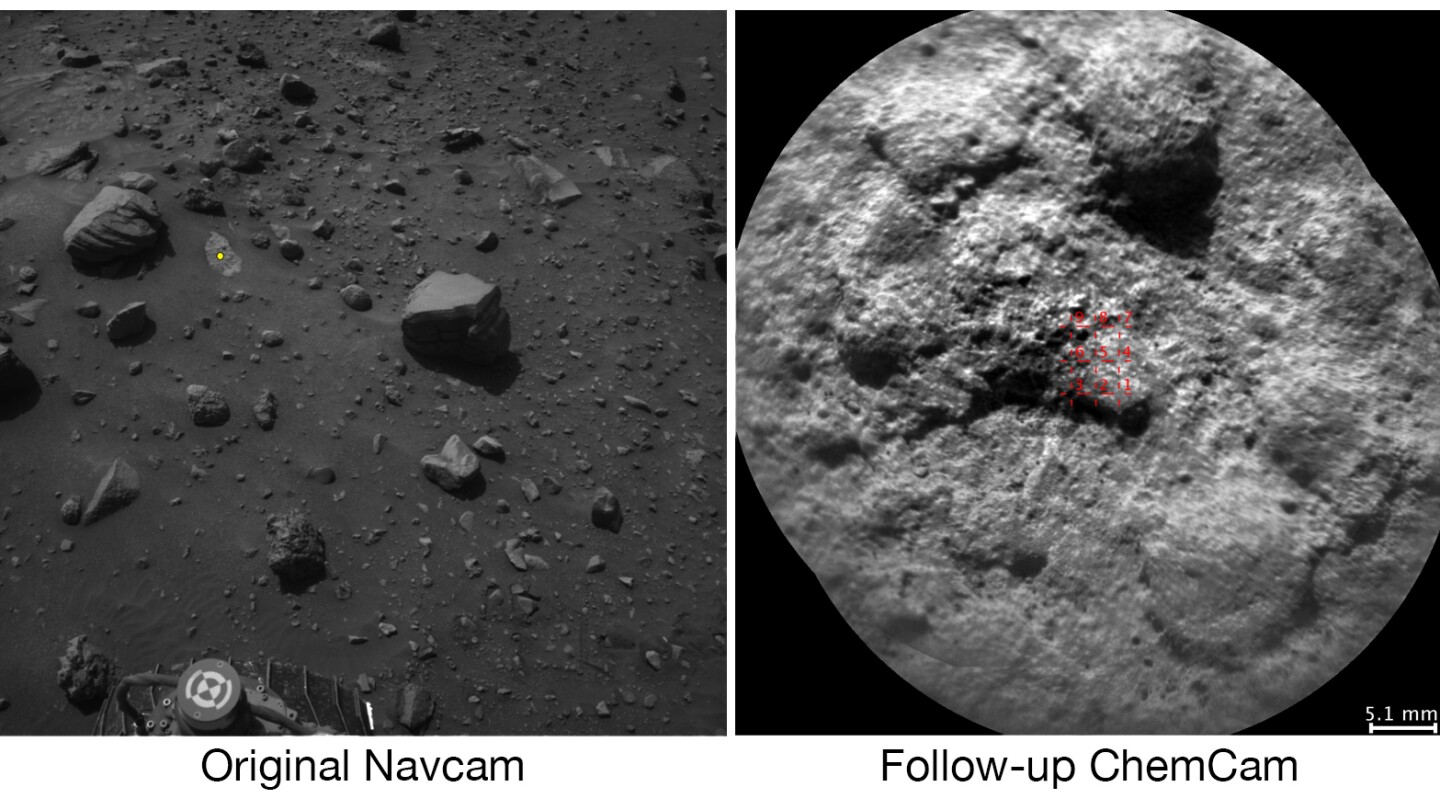Since arriving on Mars in August 2012, NASA's Curiosity Rover has accomplished a lot, travelling over Martian dunes, taking selfies, and even getting a "brain transplant". With its mission recently extended for another two years, the agency has elected to improve the distant rover's ability to conduct science operations under its own steam. The upgrade is related to the Chemistry and Camera (ChemCam) instrument, allowing the rover to pick targets to fire its laser at without direction from mission scientists back home.
The software is question, known as Autonomous Exploration for Gathering Increased Science (AEGIS), has been used before on the agency's Opportunity rover. The older rover uses the software to analyze images from its wide-angle camera in order to select rocks it should snap closer up, but it doesn't make use of the tech nearly as often as Curiosity.
Now, NASA has applied the technology to Curiosity's ChemCam instrument, which is able to identify the chemical composition of targets by firing a laser at them, and recording the wavelengths of the reflected light. Since arriving on Mars, the instrument, which can analyze rock or soil composition from a distance of 23 ft (7 m), has studied more than 1,400 targets, firing its laser more than 350,000 times.
The software is designed to analyze imagery, searching for snaps that meet certain criteria. The parameters can be adjusted by mission scientists, directing the rover to search for and study targets based on specific size and brightness characteristics.

Despite the capabilities of the software, the majority of ChemCam targets are still selected by scientists, who are actively discussing the soil and rocks seen in the images the rover sends home. However, AEGIS allows the rover to continue gathering data at times when staying in constant contact with mission scientists is difficult, such as when the position of Earth and Mars causes lengthy delays in information sharing.
Another big benefit of having the AEGIS software onboard Curiosity is that it makes the task of lining up shots significantly easier for mission coordinators.
"Due to their small size and other pointing challenges, hitting these targets accurately with the laser has often required the rover to stay in one place while ground operators fine tune pointing parameters," said robotics engineer Tara Estlin. "AEGIS enables these targets to be hit on the first try by automatically identifying them and calculating a point that will center a ChemCam measurement on the target."
Source: NASA





